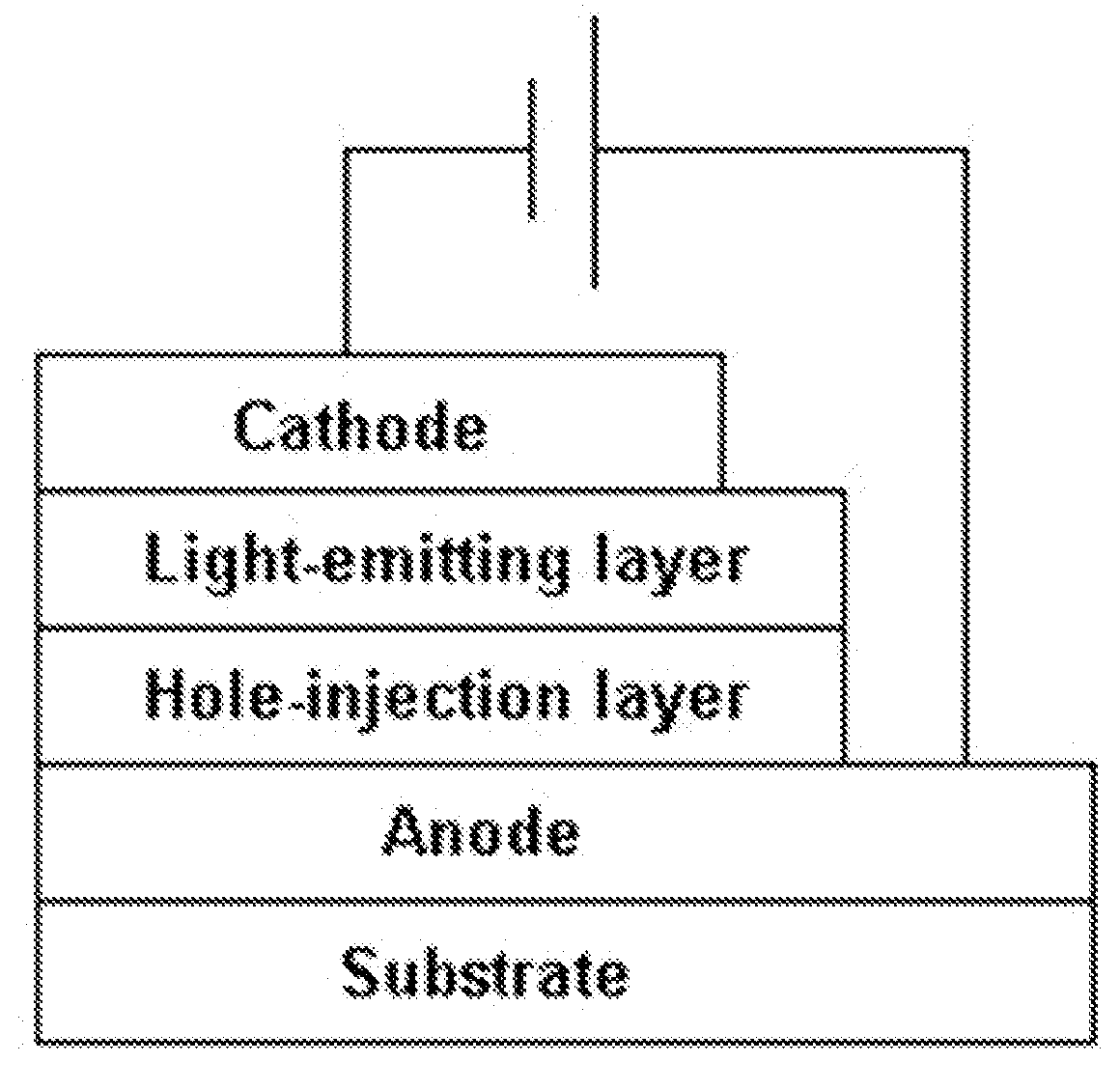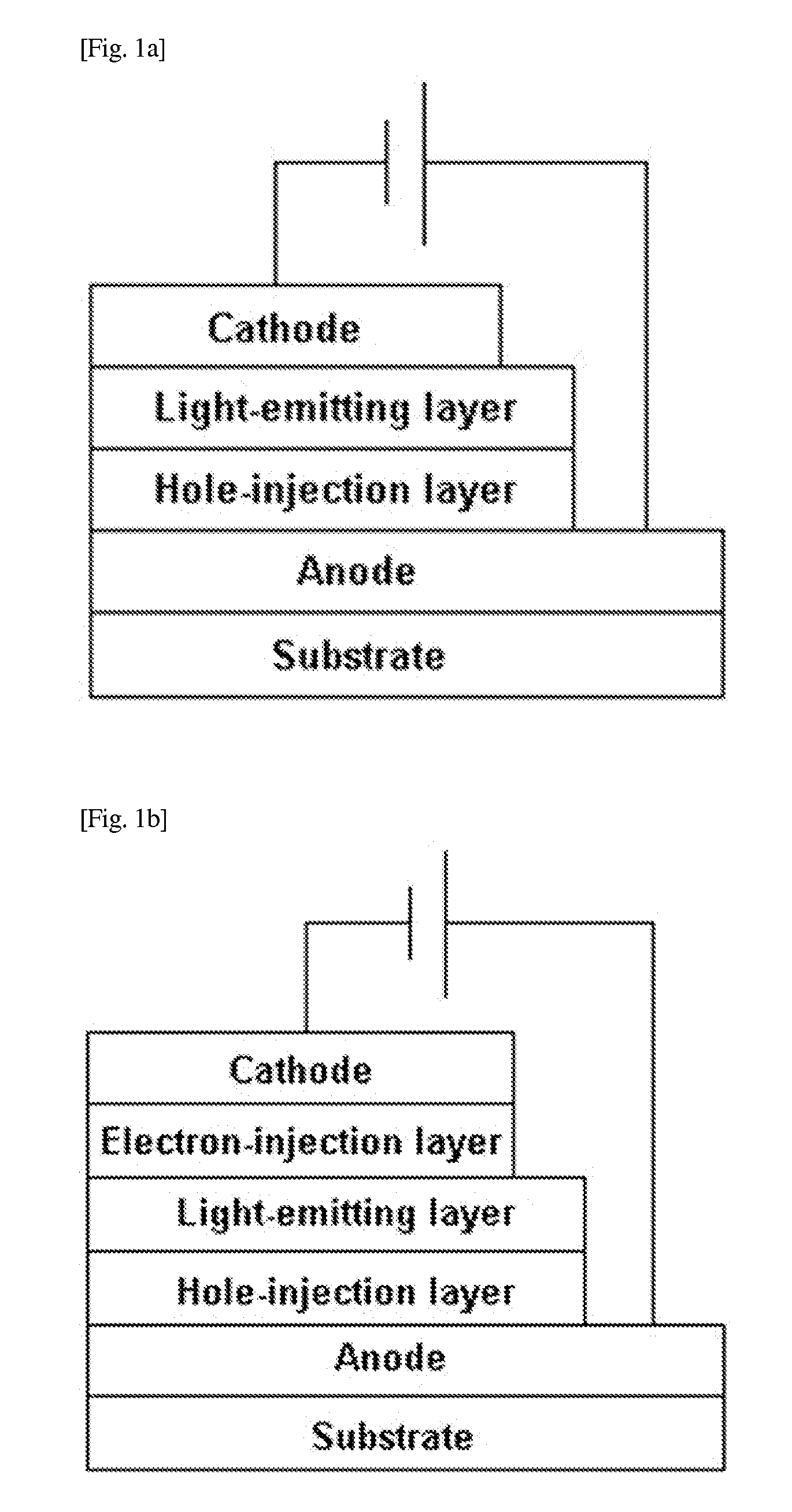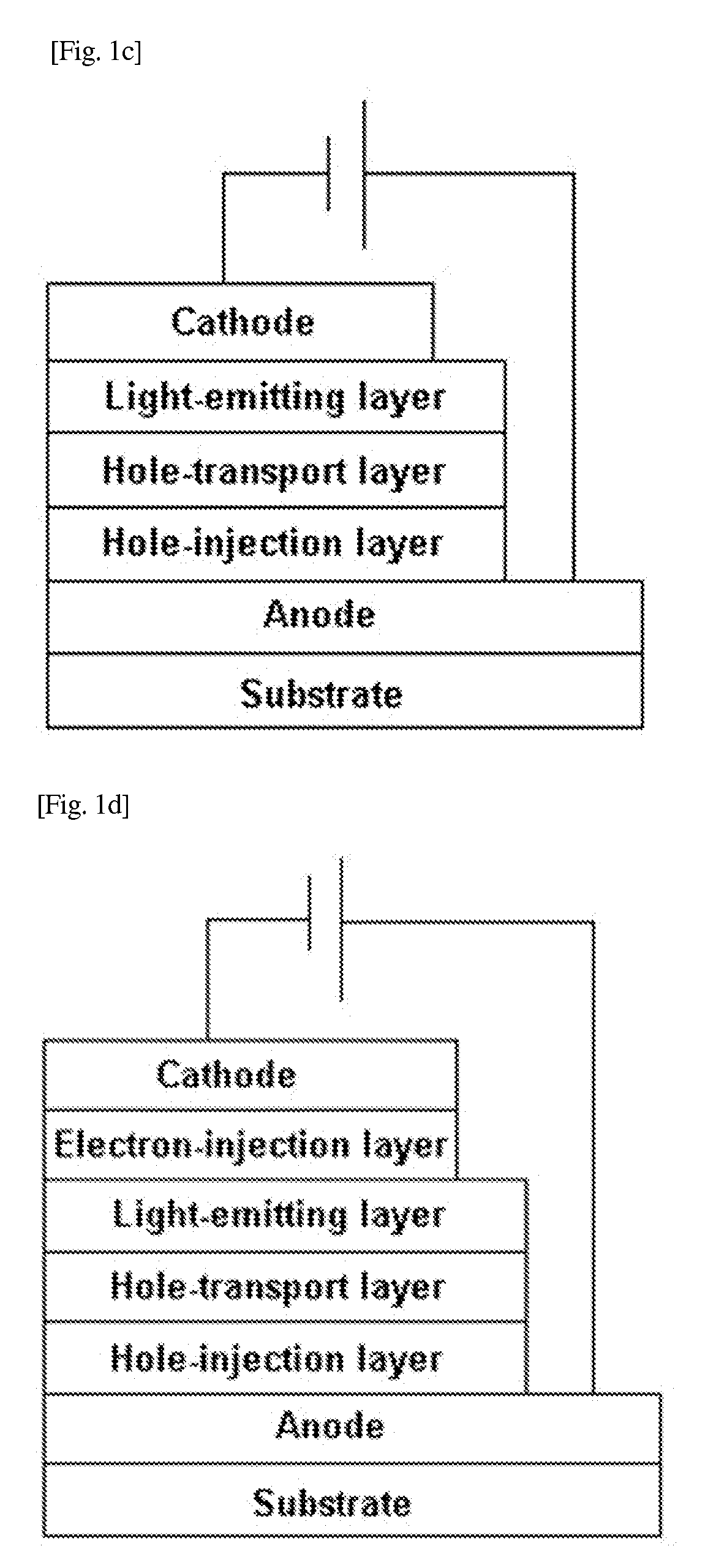Anthracene derivative and organic electroluminescent device using the same
- Summary
- Abstract
- Description
- Claims
- Application Information
AI Technical Summary
Benefits of technology
Problems solved by technology
Method used
Image
Examples
synthesis example 1
Preparation of Inventive Anthracene Derivative(2,7,9,10-tetraphenylanthracene)
1-1. Synthesis of 2,7-dibromo-9,10-dihydroxy-9,10-diphenylanthracene
[0043]2,7-dibromo-9,10-dihydroxy-9,10-diphenylanthracene was synthesized according to Reaction Scheme 1 below.
[0044]15
[0045]The above reaction was carried out as follows.
[0046]39.6 mL (0.38 mol) of bromobenzene and 520 mL of THF were placed in a 1 L round bottom flask and cooled to −78° C. Then, 205.6 mL (0.33 mol) of n-butyllithium was gradually added dropwise thereto, and the mixture was stirred at that temperature for 30 min, followed by addition of 34.4 g (0.09 mol) of 2,7-dibromoanthraquinone. The reaction material was elevated to room temperature and stirred overnight, and 260 mL of 2N hydrochloric acid was added thereto. The resulting mixture was subjected to phase separation and the thus-obtained organic layer was dried over MgSO4, followed by filtration and concentration for a subsequent reaction.
1-2. Synthesis of 2,7-dibromo-9,10...
synthesis example 2
Preparation of inventive anthracene derivative(2,7-di(4′-biphenyl)-9,10-diphenylanthracene)
[0053]Analogous to the procedure described in Synthesis Examples 1-1 and 1-2, 2,7-dibromo-9,10-diphenylanthracene was synthesized. Then, the anthracene derivative in accordance with the present invention, i.e. 2,7-di(4′-biphenyl)-9,10-diphenylanthracene was synthesized according to Reaction Scheme 4 below.
[0054]The above reaction was carried out as follows.
[0055]11.0 g (0.023 mol) of 2,7-dibromo-9,10-diphenylanthracene obtained in Section 1-2, 13.7 g (0.069 mol) of 4-biphenylboric acid, 10.4 g (0.076 mol) of potassium carbonate, 1.4 g (0.001 mol) of Pd(PPh3)4, 40 mL of water, 150 mL of toluene and 15 mL of THF were placed in a 1 L round bottom flask, and reacted under reflux cooling for 24 hours. After the reaction was completed, the reaction product was cooled to room temperature, and filtered while washing with methylene chloride. The filtrate was subjected to phase separation, and the thus-...
example 1
Fabrication of Organic EL Device According to a Preferred Embodiment of the Present Invention
[0056]The ITO glass substrate was patterned to have a light-emitting area of 2 mm×2 mm and then cleaned. The substrate was mounted in a vacuum chamber which was then adjusted to a base pressure of 1×106 torr. Using a known method, films of CuPC (200 Å), NPD (400 Å), a compound prepared in Synthesis Example 1+C545T (5%) (200 Å), Alq3 (350 Å), LiF (5 Å), and Al (1000 Å) were sequentially formed on the ITO glass. The thus-fabricated organic EL device exhibited luminance of 1839 Cd / m2 (6.61 V) at 0.4 mA.
PUM
| Property | Measurement | Unit |
|---|---|---|
| Speed | aaaaa | aaaaa |
| Speed | aaaaa | aaaaa |
| Speed | aaaaa | aaaaa |
Abstract
Description
Claims
Application Information
 Login to View More
Login to View More - R&D
- Intellectual Property
- Life Sciences
- Materials
- Tech Scout
- Unparalleled Data Quality
- Higher Quality Content
- 60% Fewer Hallucinations
Browse by: Latest US Patents, China's latest patents, Technical Efficacy Thesaurus, Application Domain, Technology Topic, Popular Technical Reports.
© 2025 PatSnap. All rights reserved.Legal|Privacy policy|Modern Slavery Act Transparency Statement|Sitemap|About US| Contact US: help@patsnap.com



